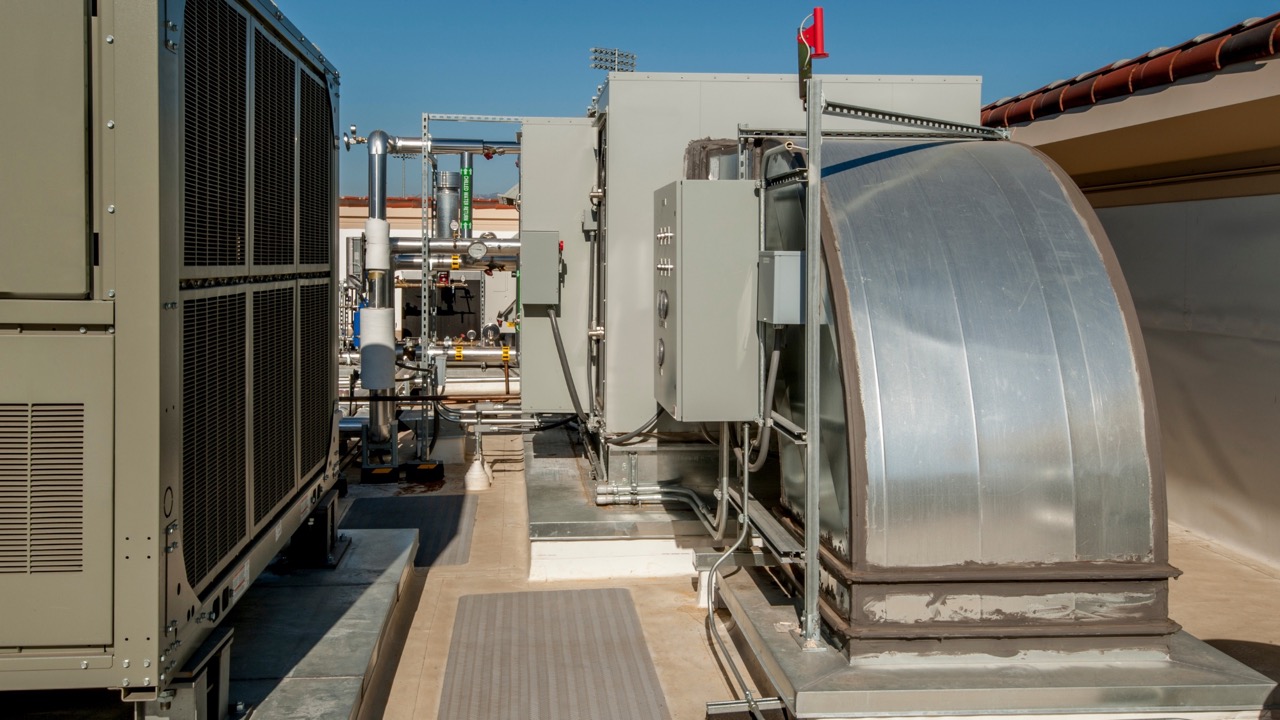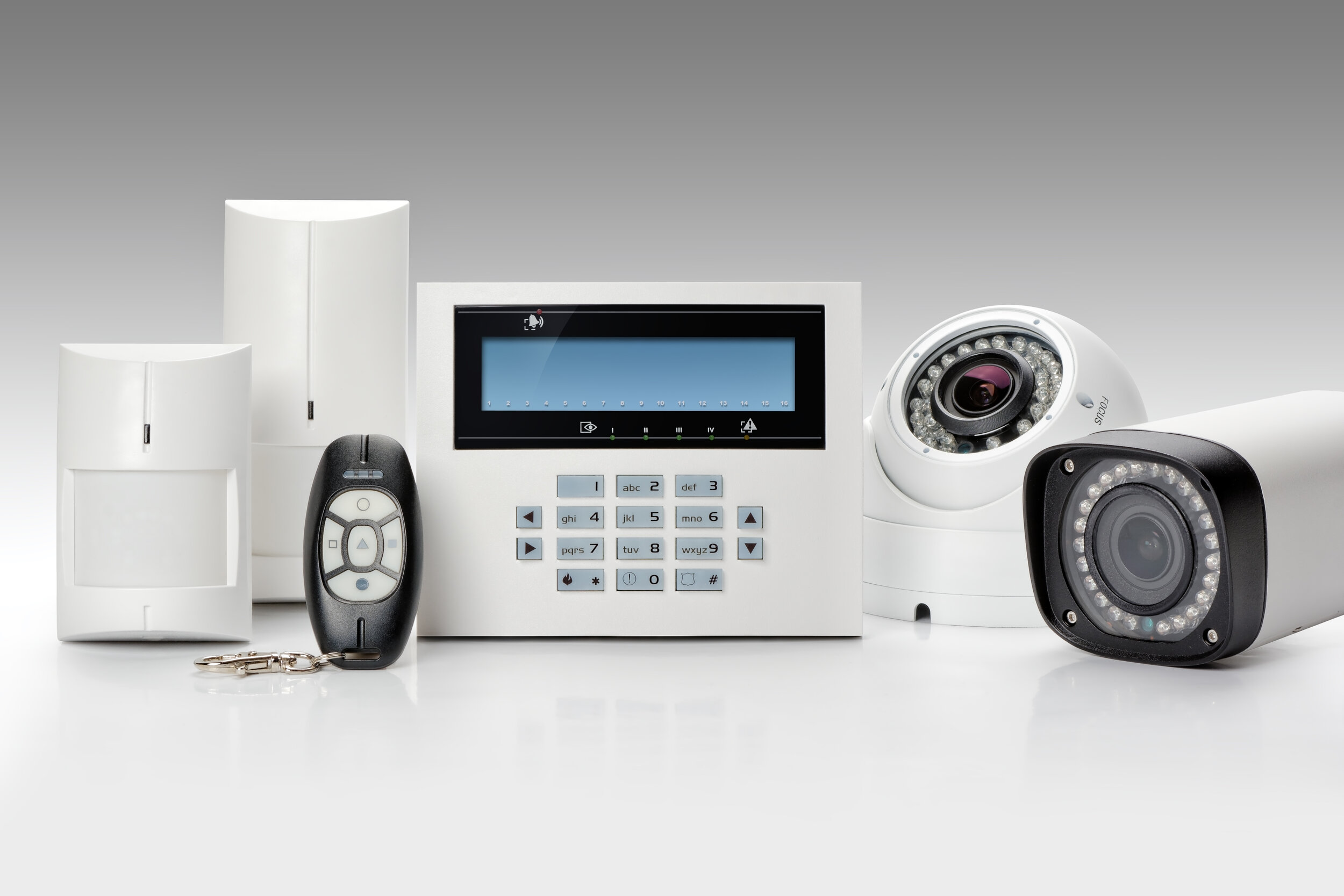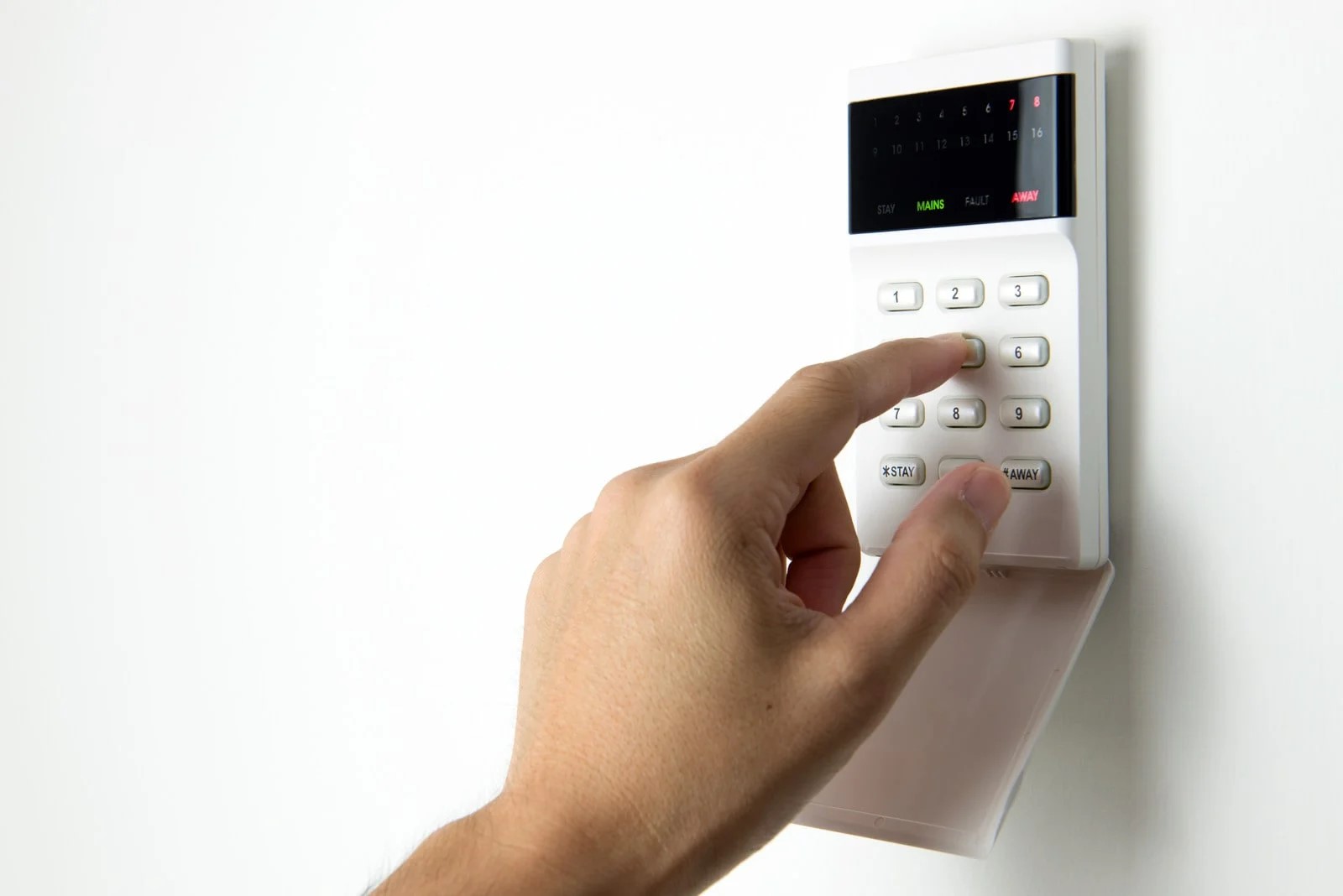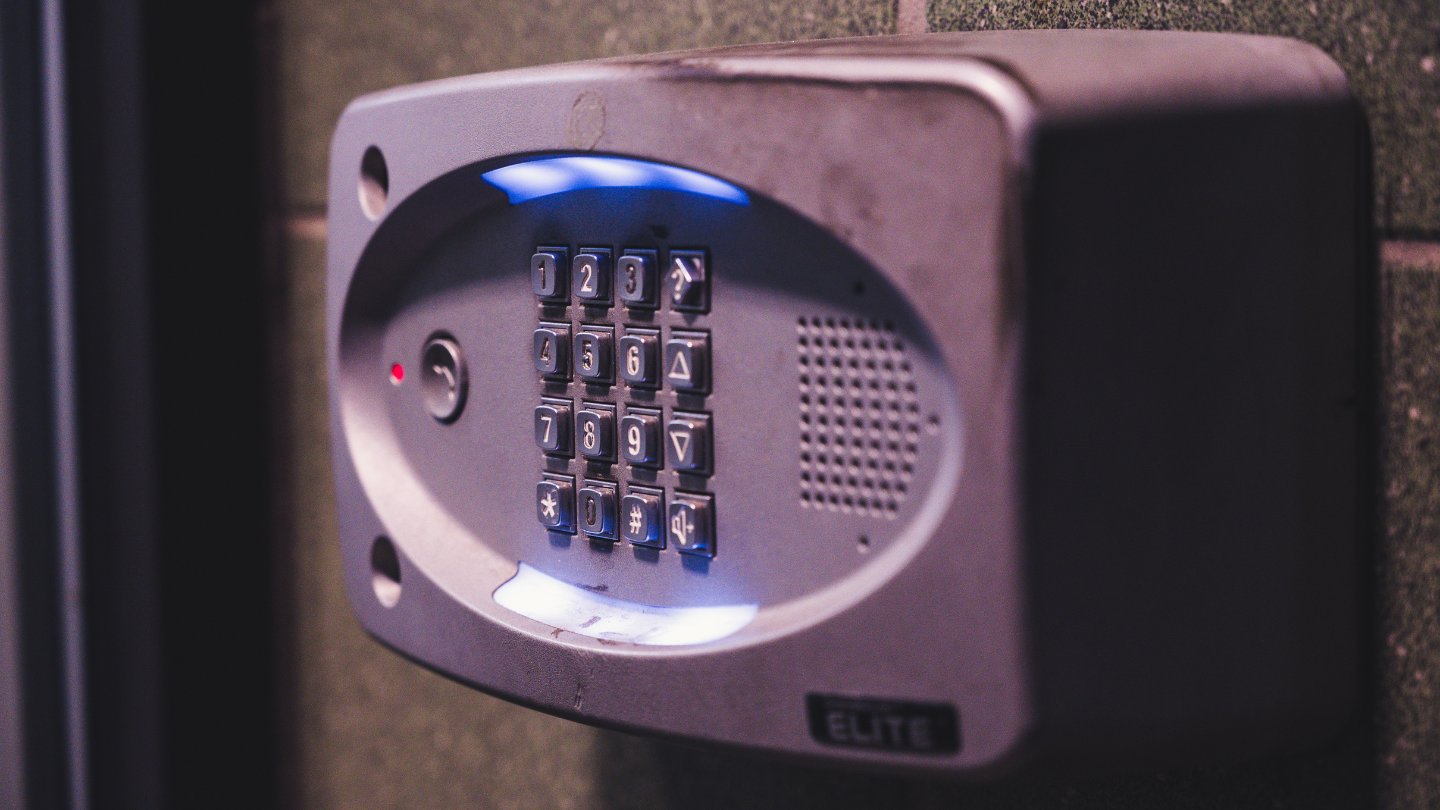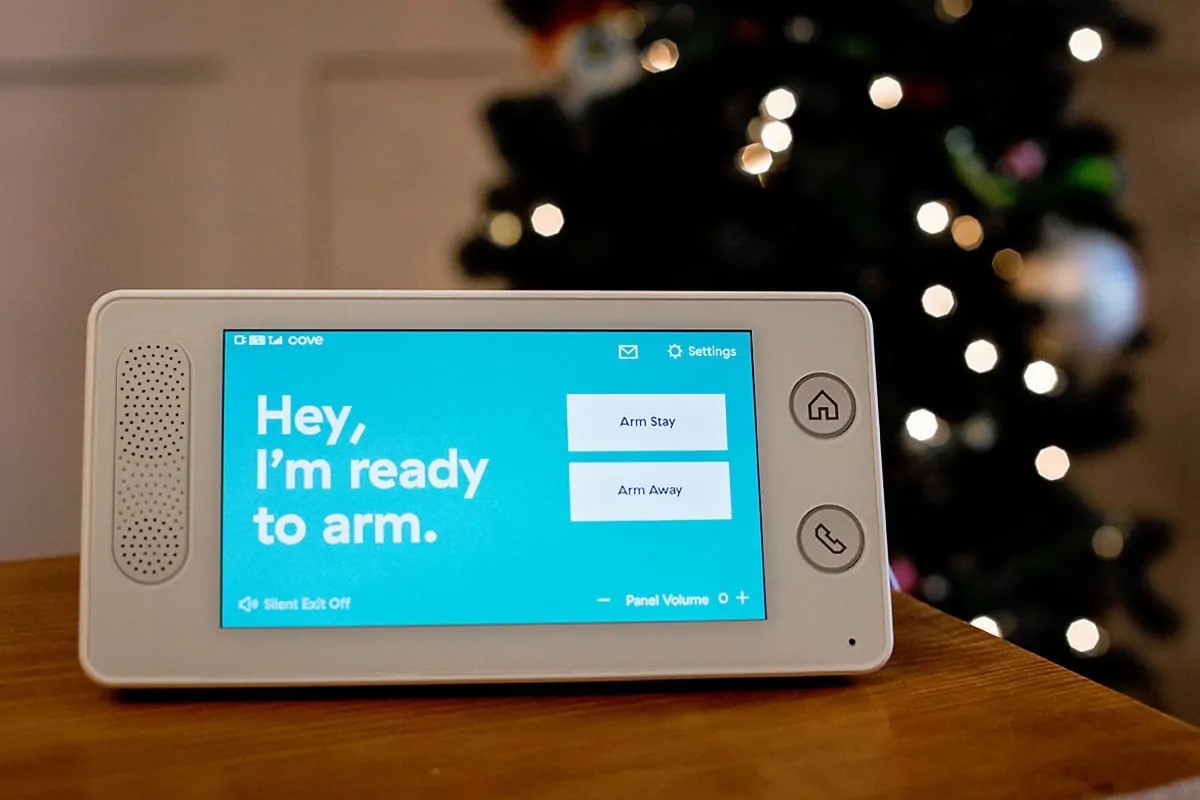Home>Home Security and Surveillance>How Do CPI Wireless Alarm Systems Work
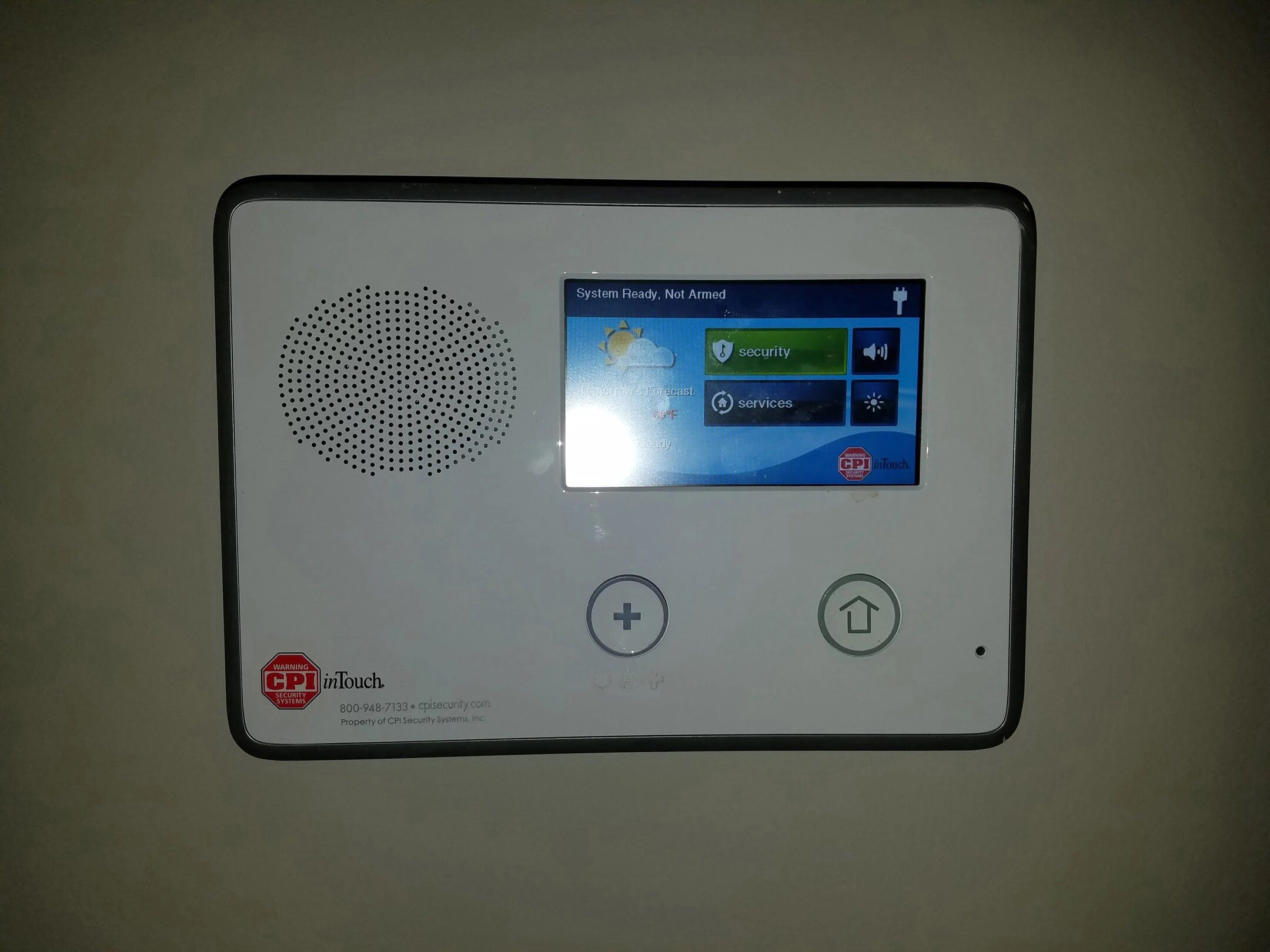

Home Security and Surveillance
How Do CPI Wireless Alarm Systems Work
Modified: March 6, 2024
Learn how CPI wireless alarm systems work for home security and surveillance. Find out how these advanced systems can protect your home and loved ones.
(Many of the links in this article redirect to a specific reviewed product. Your purchase of these products through affiliate links helps to generate commission for Storables.com, at no extra cost. Learn more)
Introduction
Welcome to the world of home security and surveillance, where peace of mind and protection are just a click away. In today’s fast-paced world, ensuring the safety of our homes and loved ones has become a top priority. That’s why homeowners are turning to advanced technologies like CPI wireless alarm systems to provide a layer of protection that is reliable, convenient, and effective.
CPI wireless alarm systems have revolutionized the way we secure our homes. Gone are the days of relying solely on traditional wired systems that are prone to tampering and require extensive installation. With CPI wireless alarm systems, users can enjoy the benefits of a cutting-edge security solution that is wireless, flexible, and highly efficient in safeguarding their property.
Whether you’re a homeowner, renter, or business owner, having a comprehensive security system in place is crucial for thwarting potential threats and deterring intruders. CPI wireless alarm systems offer a wide range of features and capabilities that put you in control of your security, giving you the peace of mind you deserve.
In this article, we will provide an overview of CPI wireless alarm systems, explore their components, delve into how they communicate, discuss the importance of communication encryption, highlight the installation process, and examine the benefits and limitations of these advanced security solutions.
So, if you’re ready to discover the world of CPI wireless alarm systems and take a step towards a safer and more secure home, let’s dive in!
Key Takeaways:
- CPI wireless alarm systems offer wireless convenience, easy installation, and customizable features for comprehensive home security. With remote monitoring and enhanced security, they provide peace of mind and protection for your property.
- While CPI wireless alarm systems have limitations such as power dependence and potential interference, proper design, installation, and ongoing maintenance can mitigate these challenges. Evaluating your specific needs and consulting experts can help determine if a CPI wireless alarm system is the right choice for your home or business security.
Read more: How Do School Alarm Systems Work
Overview of CPI Wireless Alarm Systems
CPI wireless alarm systems are state-of-the-art security solutions designed to protect your home or business from intrusions and provide you with peace of mind. These systems leverage wireless technology to offer a flexible and convenient approach to home security. Unlike traditional wired systems, CPI wireless alarm systems do not require extensive wiring or drilling, making them easier to install and less intrusive.
One of the standout features of CPI wireless alarm systems is their ability to provide comprehensive coverage. These systems offer a range of sensors and detectors that can be strategically placed throughout your property to detect movement, sounds, and environmental changes. This includes door and window sensors, motion detectors, glass break sensors, smoke detectors, and more. With these sensors in place, you can be confident that any potential threat will be detected and responded to promptly.
CPI wireless alarm systems also come equipped with advanced technology such as smartphone integration and mobile app control. This allows you to monitor and control your security system remotely, giving you access to real-time alerts, live video feeds, and the ability to arm or disarm your system from anywhere in the world. Whether you’re at work, on vacation, or simply away from home, you can have peace of mind knowing that you can keep a close eye on your property and control your security system with ease.
Another key advantage of CPI wireless alarm systems is their ability to be customized according to your specific needs and preferences. These systems offer a wide range of add-on options and features such as video surveillance cameras, smart locks, and even home automation capabilities. This allows you to tailor your security system to suit your lifestyle and enhance the overall functionality of your home. Whether you want to keep an eye on your kids, monitor package deliveries, or automate lights and appliances, CPI wireless alarm systems have got you covered.
In summary, CPI wireless alarm systems provide a comprehensive and flexible approach to home security. With their wireless technology, extensive sensor options, smartphone integration, and customization features, these systems offer convenience, peace of mind, and comprehensive protection for your home or business. In the next section, we will take a closer look at the components that make up CPI wireless alarm systems.
Components of CPI Wireless Alarm Systems
CPI wireless alarm systems are composed of several key components that work together to provide effective security and surveillance. Understanding these components is crucial for setting up and maximizing the functionality of your system. Let’s take a closer look at the essential components of CPI wireless alarm systems.
-
Control Panel:
The control panel serves as the brain of the system, managing and coordinating all the connected devices. It allows you to arm or disarm the system, receive notifications, and control various settings. The control panel is typically equipped with a keypad or touchscreen interface for easy operation.
-
Wireless Sensors:
Wireless sensors are placed strategically throughout your home to detect any unusual activity. These sensors include door/window sensors, motion sensors, glass break sensors, and environmental sensors (such as smoke detectors and carbon monoxide detectors). They wirelessly communicate with the control panel, triggering alarms and notifying you of any potential threats.
-
Read more: How Do Wireless Home Alarm Systems Work
Keychain Remote:
The keychain remote provides a convenient way to arm or disarm the system without having to access the control panel. It is a compact device that you can carry with you and is especially useful for quick and easy control when entering or leaving your home.
-
Indoor and Outdoor Cameras:
Video surveillance cameras are crucial components of CPI wireless alarm systems, providing visual monitoring of your property. Indoor and outdoor cameras capture high-definition video, allowing you to remotely view live feeds or review recorded footage. These cameras serve as a deterrent for potential intruders and provide valuable evidence in the event of an incident.
-
Remote Monitoring and Mobile App:
CPI wireless alarm systems offer remote monitoring capabilities through a mobile app. This app allows you to receive real-time notifications on your smartphone or tablet, access live video feeds, and control your system from anywhere. It gives you the flexibility to monitor and manage your security system on the go.
-
Optional Add-Ons:
CPI wireless alarm systems offer additional optional add-ons to enhance the functionality and customization of your system. These add-ons include smart locks, which allow you to remotely lock or unlock doors, and home automation features, which enable you to control lights, thermostats, and other devices remotely.
By understanding the components of CPI wireless alarm systems, you can make informed decisions about configuring and expanding your security setup. In the next section, we will explore how CPI wireless alarm systems communicate to provide effective security measures.
How CPI Wireless Alarm Systems Communicate
CPI wireless alarm systems rely on advanced communication technology to ensure seamless and secure transmission of data between the different components of the system. Understanding how CPI wireless alarm systems communicate is essential for optimizing their performance and reliability.
Wireless alarm systems typically use various methods of communication, including cellular, Wi-Fi, and radio frequency (RF) signals. Let’s explore these communication methods in more detail:
-
Cellular Communication:
CPI wireless alarm systems often utilize cellular communication as the primary means of transmitting data. These systems have a built-in cellular module that connects to a cellular network, similar to a mobile phone. This ensures a reliable and independent connection and eliminates the need for a landline or broadband internet connection.
-
Wi-Fi Communication:
In addition to cellular communication, CPI wireless alarm systems can also connect to your home’s Wi-Fi network. This enables you to control and monitor your system using the mobile app or web portal. Wi-Fi communication provides a fast and convenient way to access and manage your security system from within your home.
-
Radio Frequency (RF) Communication:
Sensors and devices within the CPI wireless alarm system communicate with the control panel using radio frequency signals. These signals allow for reliable and secure transmission of data over short distances. RF communication ensures that the sensors can send alerts to the control panel when triggered, allowing for prompt notification and response to potential threats.
One of the primary advantages of using cellular and Wi-Fi communication is their reliability. Unlike traditional wired systems that are vulnerable to power outages or cut phone lines, CPI wireless alarm systems remain connected and functional even in these situations. This ensures that your security system remains operational and continues to protect your home or business at all times.
Furthermore, CPI wireless alarm systems utilize encrypted communication to ensure the security and integrity of your data. Encryption algorithms scramble the data being transmitted, making it virtually impossible for unauthorized individuals to intercept and decipher the information. This ensures that your security system is protected from hacking attempts and maintains the confidentiality of your personal data.
In summary, CPI wireless alarm systems leverage cellular, Wi-Fi, and RF communication methods to transmit data between the control panel, sensors, and other components. This combination of communication technologies provides reliable connectivity, enhances system security, and ensures uninterrupted monitoring of your property.
In the next section, we will explore the importance of communication encryption in CPI wireless alarm systems.
Read more: How Do Alarm Systems Work?
Communication Encryption in CPI Wireless Alarm Systems
Ensuring the security and privacy of data transmitted through CPI wireless alarm systems is of utmost importance. Communication encryption plays a critical role in safeguarding the integrity of your system and protecting your personal information from unauthorized access.
CPI wireless alarm systems employ advanced encryption algorithms to encrypt the data transmitted between the different components of the system. Encryption involves scrambling the data using complex mathematical algorithms, making it unreadable to anyone who intercepts the communication without the decryption key.
By encrypting the communication, CPI wireless alarm systems provide the following benefits:
-
Data Security:
Encryption ensures that your sensitive data, including login credentials, system configurations, and video feeds, remains secure. It prevents unauthorized individuals from intercepting and accessing this information, protecting your privacy and the integrity of your security system.
-
Protection Against Hacking:
Encryption makes it extremely difficult for hackers to decipher and manipulate the data transmitted through the wireless alarm system. This makes it highly unlikely for malicious individuals to gain unauthorized access to your system and tamper with its functionality.
-
Secure Remote Access:
With encryption in place, CPI wireless alarm systems provide a secure way to access and control your system remotely. Whether you’re using the mobile app or web portal, encryption ensures that your commands and data exchanges are protected from eavesdropping or data manipulation.
It’s worth noting that CPI wireless alarm systems use industry-standard encryption protocols, such as AES (Advanced Encryption Standard) or SSL/TLS (Secure Sockets Layer/Transport Layer Security), to ensure the highest level of security. These protocols are highly secure and widely adopted, providing confidence in the protection of your data.
As a user, it’s essential to keep your wireless alarm system’s encryption credentials secure. This includes safeguarding your login credentials, setting strong and unique passwords, and regularly updating them. Additionally, it’s important to follow best practices when it comes to securing your Wi-Fi network, such as using strong encryption protocols (e.g., WPA2) and changing default passwords on routers.
In summary, communication encryption is a crucial aspect of CPI wireless alarm systems. It ensures the security, privacy, and integrity of your data transmitted between the system’s components. By employing advanced encryption algorithms and following industry-standard protocols, CPI wireless alarm systems provide a secure and trustworthy solution for protecting your home or business.
In the next section, we will explore the installation and setup process of CPI wireless alarm systems.
Read more: How Do Fire Alarm Systems Work
Installation and Set up of CPI Wireless Alarm Systems
Installing and setting up CPI wireless alarm systems is a straightforward process that can be done by homeowners or with the assistance of professional technicians. The simplicity and flexibility of wireless systems make them a popular choice for those looking for a hassle-free security solution. Let’s explore the installation and setup process of CPI wireless alarm systems:
-
Planning and System Design:
The first step in installing a CPI wireless alarm system is to plan and design the system according to your specific needs and property layout. Assess the vulnerabilities and potential access points in your home or business to determine the optimal placement of sensors, cameras, and other components.
-
Component Installation:
Once you have a system design in place, you can proceed with installing the different components of the CPI wireless alarm system. Start by mounting the control panel in a central and easily accessible location. Then, proceed to install wireless sensors on doors, windows, and other entry points. Place motion sensors strategically to cover high-traffic areas. Finally, install any additional components such as cameras or home automation devices according to your needs.
-
Connecting to Power and Network:
CPI wireless alarm systems operate on a combination of battery power and electricity. Ensure that all components are properly connected to a power source, either through batteries or electrical outlets. Next, connect the control panel and any other devices that require a network connection to your home’s Wi-Fi or cellular network.
-
Read more: How Do Burglar Alarm Sensors Work
System Configuration:
After the physical installation is complete, it’s time to configure your CPI wireless alarm system. This involves programming the control panel, setting up user codes, and adjusting system settings. Follow the manufacturer’s instructions or consult the user manual for guidance on configuring your specific system.
-
Testing and Activation:
Before considering the installation process complete, it is vital to test the system to ensure that all components are functioning correctly. Arm and disarm the system, trigger sensors, and test the communication between devices. Additionally, verify that remote access through the mobile app or web portal is working as expected. Once you have confirmed that everything is working properly, activate the security system and begin enjoying the peace of mind it provides.
While CPI wireless alarm systems can be self-installed, many users choose to enlist the help of professional technicians for a seamless and professional installation experience. Professional technicians can ensure that the system is installed correctly, provide guidance on optimal placement of components, and assist with system configuration.
It’s worth noting that CPI offers professional installation services for their wireless alarm systems. Trained technicians can handle the entire installation process, from planning and component installation to system configuration and testing. This option provides peace of mind and ensures that your system is set up correctly and ready to protect your home or business.
In the next section, we will explore the benefits of CPI wireless alarm systems and why they are an excellent choice for home security.
Benefits of CPI Wireless Alarm Systems
CPI wireless alarm systems offer a multitude of benefits that make them an excellent choice for home security. These systems combine advanced technology, convenience, and reliability to provide comprehensive protection for your property. Let’s explore some of the key benefits of CPI wireless alarm systems:
-
Wireless Convenience:
One of the standout advantages of CPI wireless alarm systems is their wireless nature. Unlike traditional wired systems, you don’t have to worry about extensive wiring or drilling, making installation quick and hassle-free. Wireless systems also allow for greater flexibility in placing sensors and cameras wherever they are needed most, without being limited by cable lengths.
-
Read more: How Do Cellular Alarm Systems Work
Ease of Installation:
CPI wireless alarm systems are designed to be user-friendly, allowing for easy installation by homeowners. The components typically come pre-programmed and ready to be connected, eliminating the need for technical expertise. However, professional installation services are also available for those who prefer a hands-off approach or want the reassurance of a professional’s expertise.
-
Customizable Features:
CPI wireless alarm systems offer a range of customizable features to meet your unique needs. You can choose from various sensors, cameras, and add-ons to create a tailored security solution. Whether you want to focus on intrusion detection, video surveillance, or home automation, CPI wireless alarm systems can be customized to fit your lifestyle and preferences.
-
Remote Monitoring and Control:
With CPI wireless alarm systems, you have the ability to monitor and control your security system remotely. Through a mobile app or web portal, you can access live video feeds, receive real-time notifications, and arm or disarm the system from anywhere in the world. This level of accessibility gives you peace of mind and allows you to stay connected to your home or business at all times.
-
Enhanced Security:
CPI wireless alarm systems provide comprehensive security and protection for your home or business. The combination of sensors, cameras, and other components ensures that any potential threats are detected and responded to promptly. Plus, the advanced communication encryption of these systems protects your data from being compromised, offering an additional layer of security.
-
Read more: How Do Wireless Security Cameras Work
Affordability and Scalability:
CPI wireless alarm systems are often more affordable than traditional wired systems, especially when considering the cost and complexity of installation. Additionally, these systems are easily scalable, allowing you to start with basic components and expand as needed. Whether you’re looking to secure a small apartment or a large property, CPI wireless alarm systems can grow with you.
Overall, CPI wireless alarm systems offer a range of benefits that make them an attractive option for home security. The wireless convenience, ease of installation, customizable features, remote monitoring, enhanced security, affordability, and scalability all contribute to providing you with peace of mind and protection for your loved ones and belongings.
In the next section, we will explore the limitations of CPI wireless alarm systems to provide you with a balanced view of these security solutions.
Limitations of CPI Wireless Alarm Systems
While CPI wireless alarm systems offer numerous advantages, it’s important to consider their limitations to make an informed decision about your home security needs. Understanding these limitations will help you determine if a CPI wireless alarm system is the right choice for you. Let’s explore some of the limitations of these systems:
-
Dependence on Power and Batteries:
CPI wireless alarm systems rely on a combination of electricity and batteries to power their components. In the event of a power outage, the system may lose its ability to communicate or operate certain functions. It’s crucial to have backup batteries in place to ensure continued functionality during power interruptions.
-
Wireless Signal Range:
CPI wireless alarm systems have a limited signal range, depending on the specific technology used. Thick walls, large distances, or obstructions such as metal objects can affect the signal reliability and range. It’s essential to test the system thoroughly during installation to ensure that all components communicate effectively within the desired range.
-
Read more: How Do Wireless Outdoor Cameras Work
Interference and False Alarms:
Wireless alarm systems can be affected by external interference, such as radio frequency interference or signal jamming. These factors can potentially cause false alarms or impact the system’s overall effectiveness. Adequate testing and configuration are necessary to minimize the risk of false alarms and optimize the system’s reliability.
-
Reliance on Internet Connectivity:
If your CPI wireless alarm system utilizes Wi-Fi communication, it is dependent on a stable and reliable internet connection. Internet outages, router malfunctions, or network disruptions can temporarily impact the system’s functionality. Consider having a backup internet connection or using a cellular communication option for added reliability.
-
Upfront Costs:
While CPI wireless alarm systems can be cost-effective in the long run, the upfront costs for purchasing the necessary components and professional installation (if desired) might be higher compared to some basic DIY options. It’s essential to weigh the initial investment against the long-term benefits and peace of mind the system provides.
It’s important to note that while CPI wireless alarm systems have limitations, many of these challenges can be mitigated by proper system design, installation, and ongoing maintenance. Working with trained professionals or following manufacturer guidelines can help address these limitations and ensure optimal system performance.
Considering both the benefits and limitations of CPI wireless alarm systems will assist you in making an informed decision about the best security solution for your home or business. It’s recommended to thoroughly evaluate your specific requirements and consult with experts to determine if a CPI wireless alarm system aligns with your security needs.
Now that we have explored the limitations of CPI wireless alarm systems, let’s summarize the key points in the concluding section.
Conclusion
CPI wireless alarm systems provide a reliable, convenient, and effective solution for home security and surveillance. These systems offer a range of benefits, including wireless convenience, easy installation, customizable features, remote monitoring, enhanced security, affordability, and scalability. With advanced communication technology and encryption, CPI wireless alarm systems ensure seamless transmission of data and protect the privacy of your information.
During installation and setup, careful planning and component placement are crucial for optimal system performance. Professional installation services are available for those who prefer assistance or want the expertise of trained technicians. Configuration and testing provide the final touch to ensure that all components are functioning correctly.
While CPI wireless alarm systems have limitations such as power dependence, range limitations, potential interference, reliance on internet connectivity, and upfront costs, these challenges can be mitigated through proper design, installation, and ongoing maintenance. Evaluating your specific needs and consulting experts can help determine if a CPI wireless alarm system is the right choice for your home or business security.
Ultimately, CPI wireless alarm systems offer peace of mind by providing comprehensive protection for your property. With the ability to remotely monitor and control your system, you can stay connected to your home or business from anywhere. The flexibility to customize your system according to your preferences and the scalability to expand as needed ensure that your security setup can meet your evolving needs.
In a rapidly changing world, where security is a top priority, CPI wireless alarm systems provide homeowners and business owners with the technology and peace of mind they need. So, whether you’re looking to enhance the security of your family, protect your valuable possessions, or safeguard your business, consider the benefits and limitations of CPI wireless alarm systems in making an informed decision. Invest in the safety and security of your property today and enjoy the peace of mind that comes with a reliable and efficient security solution like CPI wireless alarm systems.
Frequently Asked Questions about How Do CPI Wireless Alarm Systems Work
Was this page helpful?
At Storables.com, we guarantee accurate and reliable information. Our content, validated by Expert Board Contributors, is crafted following stringent Editorial Policies. We're committed to providing you with well-researched, expert-backed insights for all your informational needs.
